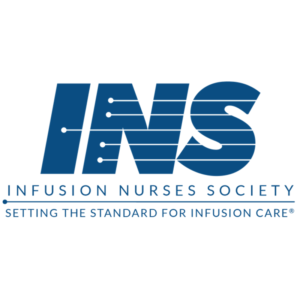Interventional Care


We notice that you are visiting us from . This site only services US-based visitors. Would you like to visit the site that is appropriate for your location?

In January 2021, the Infusion Nurses Society (INS) released the 8th edition of the Infusion Therapy Standards of Practice, which is revised every 5 years. With this revision came a practice recommendation pertaining to skin antisepsis which caused some concern regarding acceptable product (or product requirements) for skin preparation prior to vascular access device (VAD) placement and for care, and maintenance, of the insertion site during dressing changes. In May 2021, INS updated the Infusion Therapy Standards with four (4) corrections that supersede the January recommendations. This Q&A is intended to address some of the questions as a result of this update.
Q; Who refers to the INS standards of practice and why is it important?
A:Infusion practice is comprised of healthcare professionals with varying job titles across a range of practice settings all with the common goal of providing evidence-based healthcare in a safe and effective manner. The practice recommendations are intended to ensure competent practice and maintain patient trust while delivering patient-centered infusion care.
Q: What did the 2016 Standards of Practice Document recommend for skin antisepsis prior to vascular access device (VAD) placement, as well as for care and maintenance of the insertion site?
A: The 2016 practice recommendations were a bit different than the 2021 document; the skin antisepsis recommendations in 2016 were provided separately for insertion and care and maintenance:
For insertion, the skin antisepsis recommendations were as follows:
Cleanse insertion site with antiseptic solution; allow to dry completely.
For care and maintenance of the insertions site, the skin antisepsis recommendations were as follows:
Ongoing assessment, site care, and dressing change: The preferred skin antiseptic agent is >0.5% chlorhexidine in alcohol solution; for any contraindications to alcoholic chlorhexidine solution, alternative antiseptic solutions include tincture of iodine, an iodophor (povidone-iodine), or
70% alcohol.
Q: How did the January released 2021 Standards of Practice document change from the 2016 recommendation for skin antisepsis?
A: The recommendation for product chemistry did not change; an alcoholic-chlorhexidine gluconate (CHG) skin antiseptic is still the preferred chemistry unless clinically contra-indicated:
Perform skin antisepsis using the preferred skin antiseptic agent of alcohol-based chlorhexidine solution. (Level of evidence I)
However, there was an additional practice recommendation regarding the sterility of the product:
Use a single-use sterile applicator containing sterile solution, not a multiple use product (eg, bottle of antiseptic solution). (Level of evidence IV)
Q: What does the INS Standards correction mean for skin antisepsis selection?
A: In May 2021, INS acknowledged four corrections that will supersede recommendations published in January 2021. One such correction includes an update to Standard 33, Vascular Access Site and Skin Antisepsis Practice Recommendation D [Page S96 of the Standards of Practice] which removes the word sterile from the INS 2021 practice recommendation. The use of only a sterile solution for skin antisepsis is not supported by current clinical evidence substantiating the change in guidance.
The new wording is as follows: Use a single-use applicator containing antiseptic solution, not a multiple use product (e.g., bottle of antiseptic solution). (Level of evidence IV)
Q. Can I continue to safely and effectively use the Prevantics® skin products prior to VAD insertion, care and maintenance?
A: PDI’s Prevantics® skin swabs and swabsticks are an ideal product for VAD placement and care and maintenance. The Prevantics Swabstick has a 7-day continued antimicrobial activity on the skin (aligning nicely with central line dressing change schedules) and is a pre-saturated swabstick which does not require cracking of a glass ampule. The dual-sided nature of the swabstick’s applicator tip, in addition to a low profile with squared edges, makes it easy to navigate around an insertion site during VAD maintenance without fear of dislodging the catheter. The soft applicator tip is also gentle on the skin.
The Prevantics Swab (1.0 ml) has a dry site prep time of 15 sec, with a 30 sec dry time- which is shorter than other alcoholic-chlorhexidine products on the market- making overall prep time that much quicker and more likely to garner compliance.
INS encourages users to carefully read through the changes and to make the appropriate updates to clinical practice. Please note: a formal correction will be printed in the Journal of Infusion Nursing July/August issue with corresponding links to the digital edition. Click Here to view and download the Standards correction through the INS site.